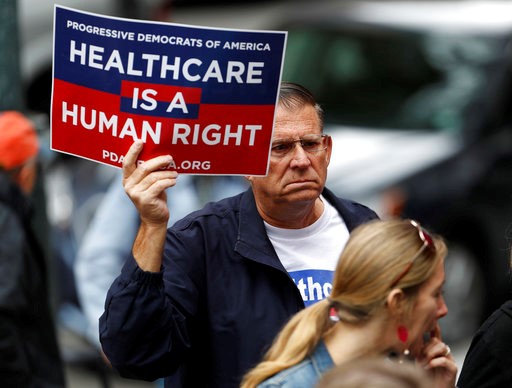“It is my aspiration that health finally will be seen not as a blessing to be wished for, but as a human right to be fought for,” said UN Secretary-General Kofi Annan. The human rights framework creates a platform to fight for the human right to health, facilitating international mechanisms for monitoring and accountability and mobilizing civil society to claim their own rights. My first blog post outlined some of the mechanisms in place that can be leveraged to protect and advocate for the right to health, including NGOs’ social mobilization, UN treaty bodies and national health policies. Despite its utility, the human rights framework has flaws that must be identified and discussed. There is a lack of international consensus on the nature and scope of health-related rights and state obligations. Although the consensus is growing, many states, including the U.S., disagree with the Office of the United Nations High Commissioner for Human Rights (OHCHR)’s Fact Sheet 31, which seeks to define the right to health. The United States considers the fact sheet to be misleading in its legal conclusions about the obligations of states, including “equal and timely access to basic health services” and “participation of the population in health-related decision-making at the national and community levels.” The U.S. has even stated that the legal conclusions in the Fact Sheet do not foster respect for international law, viewing them as policy objectives that have been morphed into assertions of legal obligation that do not meet international law standards. The U.S. finds it problematic that so much of what the Fact Sheet asserts to be included in the right to health is not actually being implemented in most states, and thinks that much of what the Fact Sheet delineates cannot be implemented at the national level.
The United States’ criticism elucidates a key issue with progressively realized rights. The idea behind progressive realization is that, although resource constraints limit states’ abilities to protect and fulfill human rights obligations, they should take appropriate measures towards full realization to the maximum of their available resources. Although the provision of health care can be limited by resource constraints and thus falls under progressive realization, states are obligated to eliminate discrimination and to “take steps.” In relation to the right to health, it is difficult to determine if a country is taking sufficient steps for progressive realization. UN treaty bodies and the Special Rapporteur on the right to the highest attainable standard of health conduct this monitoring and oversight work at the international level. It is much more difficult to determine if a country is working hard enough toward certain goals than if it has actually met those goals, and this murky ground in accountability and monitoring that comes with progressive realization is a significant obstacle.
However, UN treaty bodies and the Special Rapporteur are not alone in efforts to monitor the right to health and to hold states accountable. The human rights framework empowers individuals to claim their own rights. To me, the most compelling work of human rights is in impacting civil society and creating stakeholders on the ground who can pressure governments, expose gaps in health care, and advocate for rights to be implemented.
The rights-based approach to health care also faces deep political challenges. Atul Gawande, a writer for The New Yorker, discussed the right to health care in the United States in a recent article that chronicles Americans’ varying opinions, looking for common ground. To some Americans, the idea of a right to health care is unsettling because it fails to distinguish between the deserving and the undeserving, those who work for it and those who do not. Other Americans Gawande spoke to, like one man named Arnold, think about it differently. Arnold said, “I think the goal should be security. Not just financial security but mental security—knowing that, no matter how bad things get, this shouldn’t be what you worry about. We don’t worry about the Fire Department, or the police. We don’t worry about the roads we travel on. And it’s not, like, ‘Here’s the traffic lane for the ones who did well and saved money, and you poor people, you have to drive over here. Somebody I know said to me, ‘If we give everybody health care, it’ll be abused.’ I told her that’s a risk we take. The roads are abused. A lot of things are abused. It’s part of the deal.” This deal is where health care breaks down in America. Policy is never perfect, and some people will almost always take out more while others put in more. Necessities like health care can only be provided through “collective effort and shared costs,” but when there is so much variety in what different people put into and get out of the system, the belief in the right breaks down. This creates a political obstacle to a rights-based approach to health.
Although the feasibility, definition and political support of the right to health are significant obstacles, there is ample evidence that the human rights framework is making our world a healthier, more equitable place. For example, there has been a paradigm shift in recognizing the rights of people with disabilities. They are no longer viewed as objects of medical treatment or charity, but as people who are capable of making their own decisions and exercising their rights, especially related to their health care. Additionally, the Treatment Action Campaign (TAC), an NGO in South Africa, successfully pressured companies to provide antiretroviral drugs to African countries at lower prices by utilizing a rights-based approach and human rights language. Moreover, during August 2017 in Chile, the Constitutional Court ruled in favor of a bill that approved several exceptions to the criminalization of abortion, illustrating improved recognition of women’s rights, although implementation of the law is still a challenge.


